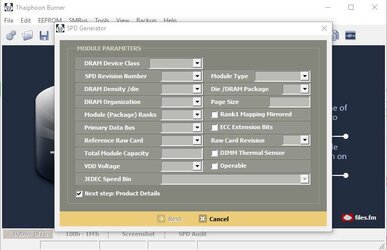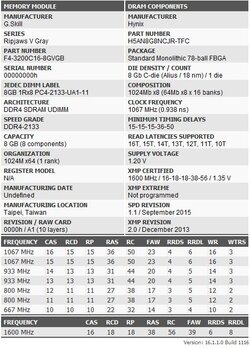- Joined
- Dec 2, 2019
Hello all!
I am new to overclocking and this forum, so please be easy on me
I want to OC my RAM to CL14, but I do not know what is the best settings I can try first.
So a few things I want to know (I know it was repeated several times, I am flooding my own questions and want to see that I have it right)
Just to mention, I have an Intel i5 8600K (which will also be OC'ed in the near future) and Asus Maximus X Formula.
1. If I want to put the CL to be 14, what does the number in the end stands for? like 14-14-14-X?
How do i know whats the proper "multiplier" ?
2. If I put a timing that will not go past POST, Should I reset CMOS or I could enter bios?
3. What are the best settings that do not push too much on heat (somewhere around base voltage of the sticks which is 1.35 from what I recall and checked on the manufacturer website)
4. If i wanna go CL 15, What is the "end" that I need to put?
Thank you for your help!
- - - Auto-Merged Double Post - - -
And If anyone has like screenshots of Asus BIOS to show and explain in a bit more depth that will be more than helpful!
I am new to overclocking and this forum, so please be easy on me
I want to OC my RAM to CL14, but I do not know what is the best settings I can try first.
So a few things I want to know (I know it was repeated several times, I am flooding my own questions and want to see that I have it right)
Just to mention, I have an Intel i5 8600K (which will also be OC'ed in the near future) and Asus Maximus X Formula.
1. If I want to put the CL to be 14, what does the number in the end stands for? like 14-14-14-X?
How do i know whats the proper "multiplier" ?
2. If I put a timing that will not go past POST, Should I reset CMOS or I could enter bios?
3. What are the best settings that do not push too much on heat (somewhere around base voltage of the sticks which is 1.35 from what I recall and checked on the manufacturer website)
4. If i wanna go CL 15, What is the "end" that I need to put?
Thank you for your help!
- - - Auto-Merged Double Post - - -
And If anyone has like screenshots of Asus BIOS to show and explain in a bit more depth that will be more than helpful!


